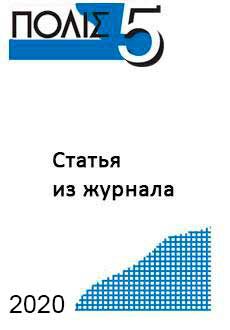Online shop of "Polis. Political Studies" Journal
We in the world, the world in us
Grinin L.Ye., Grinin A.L. Revolutions of the 20th Century: A Theoretical-Quantitative Analysis. – Polis. Political Studies. 2020. No. 5. P. 130-147. (In Russ.).
Free!
revolution, analogue of revolution, wave of revolution, typology of revolutions, World System, World-System event, revolutionary event, modernization..
There is abundant literature exploring twentieth-century revolutions, but there are still considerable gaps in terms of theoretical approaches to the typology of revolutions. Besides, the number of quantitative studies of twentieth-century revolutions in their totality is also insufficient. The present article suggests a theoretical and quantitative analysis of the revolutionary process of the 20th century. In the article we present an original typology of revolutions, and also introduce the notion of an analogue of revolution. The authors conduct an analysis of the general characteristics of twentieth-century revolutions, noting their differences from revolutions of the previous period (in particular, the shift of revolutionary activity from the heart of the World-system to its periphery). A new approach to distinguish waves of revolutions is introduced, comprising of the following criteria: 1) the existence of an objective common cause underlying the events within the World-System framework; 2) the number of revolutions should be not less than 4-5; at that a revolutionary wave should not include the events within one large state; 3) the time interval between the start of the first and the last revolutionary event should not be more than ten years; and 4) a chronological period should include only one revolutionary wave. These criteria allowed five waves to be distinguished. The first wave lasted from 1905 to 1911. The major reasons of these revolutions were connected with modernization in Turkey, Persia, China, and some other countries and related changes in their public consciousness. The second wave of 1917–1923 was connected with the results of World War I. The third wave of revolutions occurred in 1930–1938; its launching World-System event was the unprecedented world economic crisis of the Great Depression. The fourth wave of revolutions of 1943–1949 was associated with the outcomes of World War II. The fifth wave happened in 1989–1996 and comprised of the anti-communist revolutions in Eastern Europe and some republics of the USSR. The article presents a novel quantitative analysis of revolutions according to different definitions. We also describe a quantitative distribution of revolutions among the waves, and also perform another quantitative analysis of revolutionary events. Combined with a theoretical-quantitative analysis, all these allow for the development of new perspectives on the revolutionary process of the twentieth century.
 English
English Русский
Русский

Reviews
There are no reviews yet.